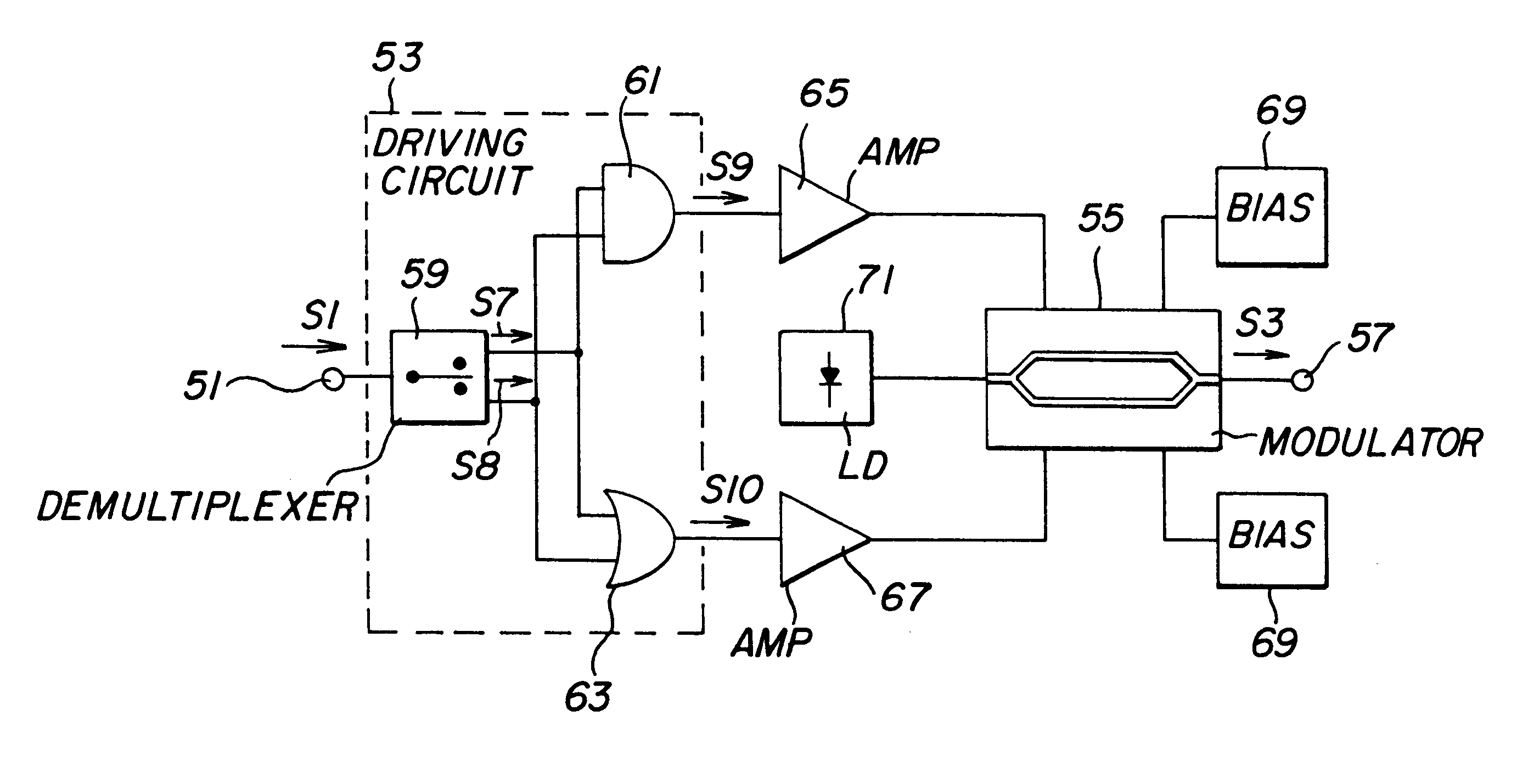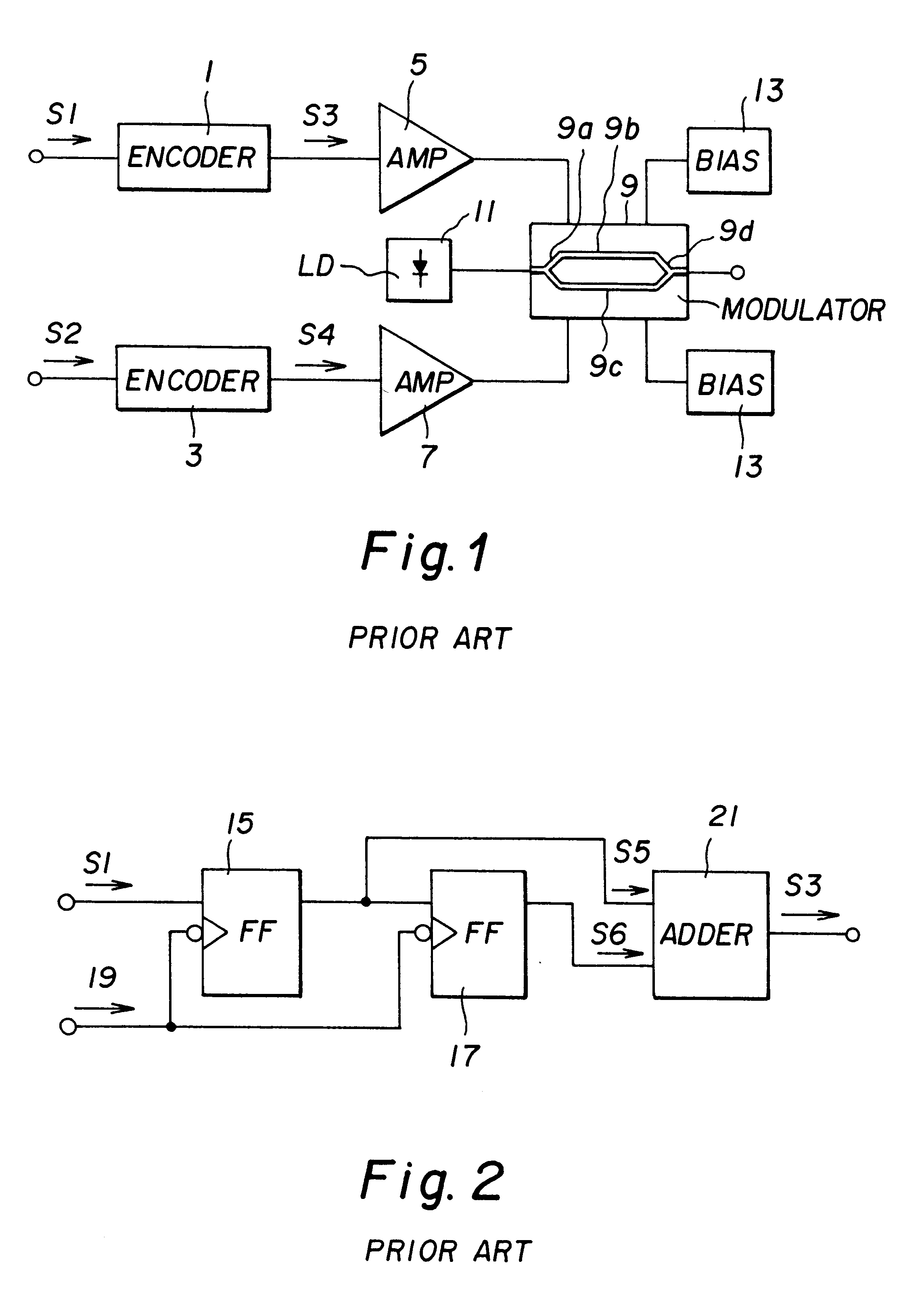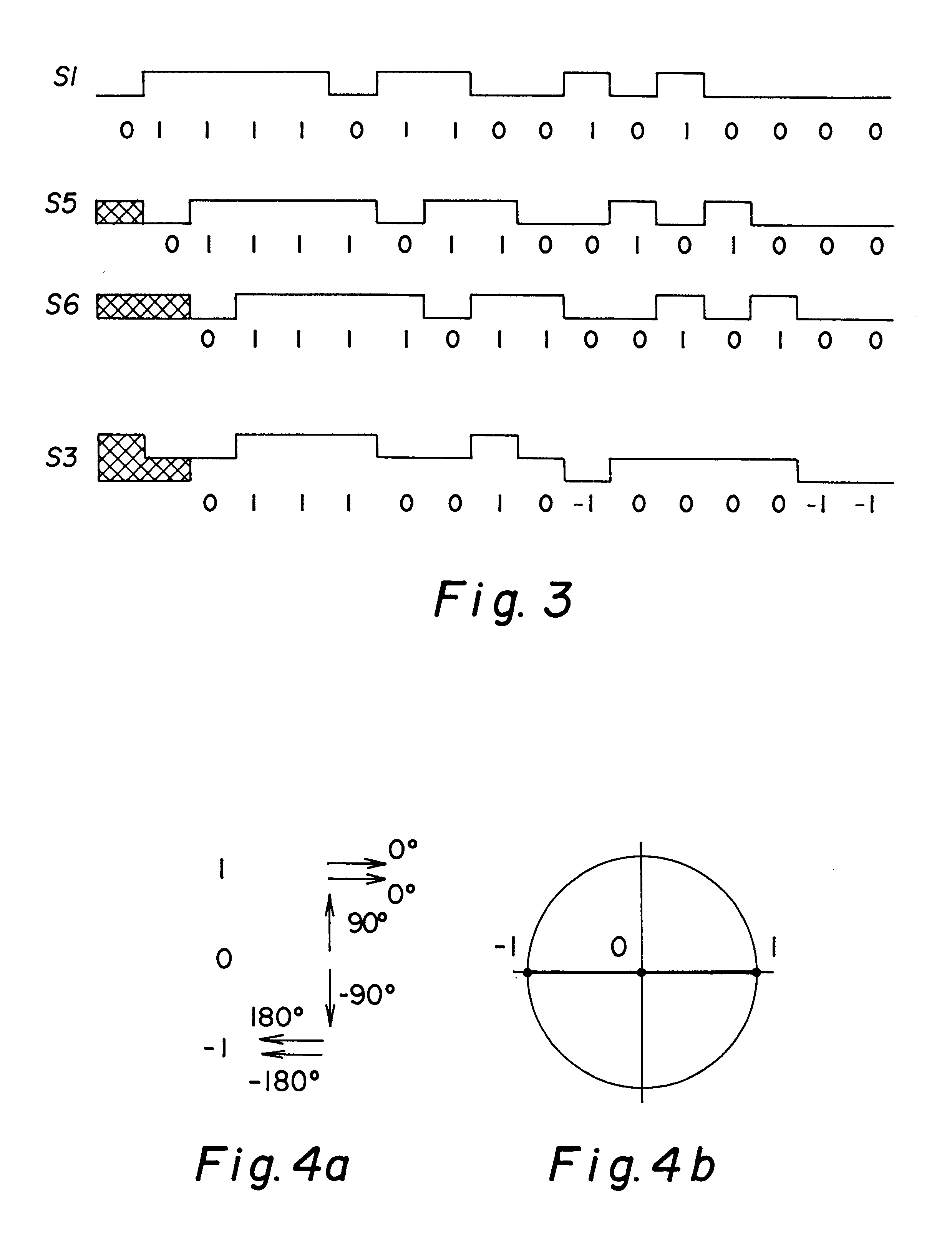Optical transmitter system and method
a technology of optical transmitters and optical receivers, applied in the direction of digital transmission, transmission monitoring, instruments, etc., can solve the problems of limiting the transmission distance due to chromatic dispersion, and achieve the effects of reducing the receiver sensitivity, facilitating and simple implementation, and reducing the demands on the receiver
- Summary
- Abstract
- Description
- Claims
- Application Information
AI Technical Summary
Benefits of technology
Problems solved by technology
Method used
Image
Examples
Embodiment Construction
The duobinary transmitter according to the present invention is based on the DEMZ-modulator, but the modulation is completely different compared to the modulation technique as described in prior art.
A first preferred embodiment of the present invention will be described with reference to FIG. 5. An optical duobinary transmitter comprises an input terminal 51, a driving circuit 53, a double electrode optical modulator 55, preferably a DEMZ-modulator, and an output terminal 57.
The driving circuit is connected to the input terminal and comprises a demultiplexer 59 and two logical gates 61, 63, preferably an AND- and an OR-gate. The demultiplexer is arranged to demultiplex an input binary signal S1 into two binary signals S7 and S8, each having half the bit-rate of the input binary signal S1. In this case it is essential that these signals change its marks out of phase to each other. For example, an incoming signal sequence ABCDEFGH should be demultiplexed into the sequences AACCEEGG* a...
PUM
 Login to View More
Login to View More Abstract
Description
Claims
Application Information
 Login to View More
Login to View More - R&D
- Intellectual Property
- Life Sciences
- Materials
- Tech Scout
- Unparalleled Data Quality
- Higher Quality Content
- 60% Fewer Hallucinations
Browse by: Latest US Patents, China's latest patents, Technical Efficacy Thesaurus, Application Domain, Technology Topic, Popular Technical Reports.
© 2025 PatSnap. All rights reserved.Legal|Privacy policy|Modern Slavery Act Transparency Statement|Sitemap|About US| Contact US: help@patsnap.com



